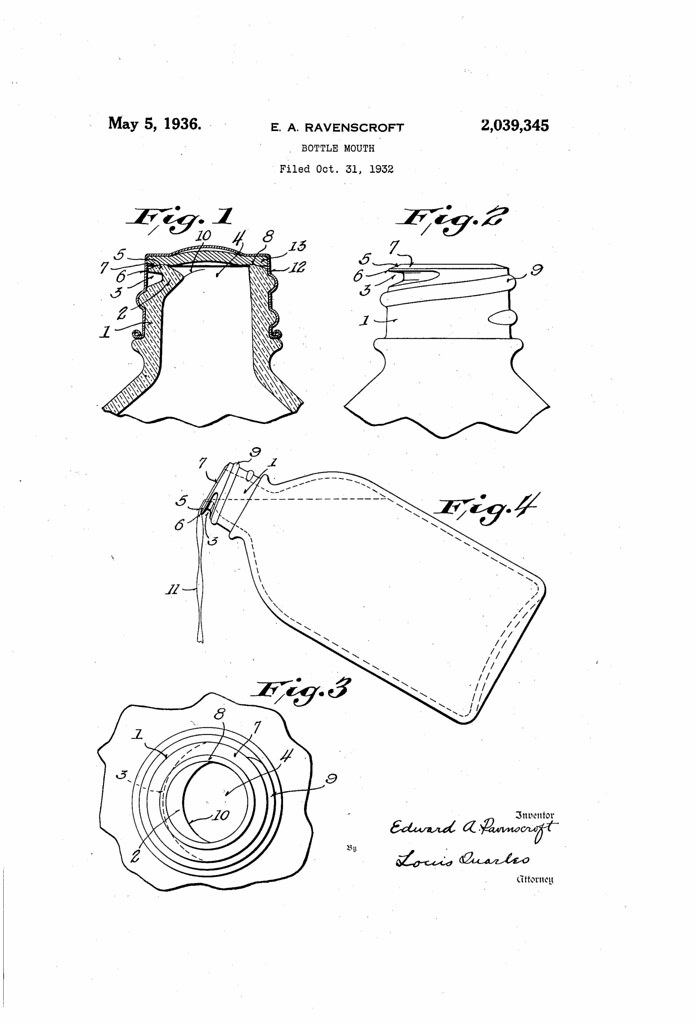
Today in 1936, US Patent 2039345 A was issued, an invention of Edward A. Ravenscroft, for his “Screw-Top Bottle Mouth.” There’s no Abstract, although in the description it includes this summary:
This invention relates to bottle mouths capable of being closed by drawn or molded caps of practical depths ‘and diameters. It resides in a formation of mouth which provides for a pouring lip without materially reducing the area of the throat or increasing the diameter of the required cap, and without necessitating a lowering of fastening means on the neck to such a point that drawn or molded caps .of impractical depths are required for closing.
In forming closures for bottles substantial economies may be erected through the use of cap closures instead of corks. The cap closure is ideal for bottles intended to contain dry or semi-dry substances, but for closing bottles intended to contain liquids, which are to be dispensed therefrom, cap closures known prior to this invention are open to very serious objections. The common screw cap closure is entirely devoid of any pouring lip and the stream emitted from such a bottle mouth breaks during pouring, spreads down the side of the bottle and is so erratic in behavior that it cannot be directed with any degree of certainty. The fluid which flows down the side of the bottle spreads in copious quantities into the threads or other fastening means on the neck and in many cases causes sticking of the cap. In the case of corrosive or poisonous fluids, the fluid on the outside of the bottle constitutes a real hazard; and in any case is decidedly disagreeable.
Attempts have been made to remedy the above difficulties but none of them has been acceptable. One of these attempts proposes the forming of a pouring lip at the top of the bottle, the threads for securing the cap being displaced a relatively long distance down the neck. This necessitates an exceptionally deep cap, which is so expensive to draw that any economy over the use of ordinary corks is impossible. Further, a substantial constriction of the throat of the bottle is involved in this construction which interferes with rapid pouring. In other constructions proposed a notch at the neck of the bottle is employed, the same producing a malformed lip of small effectiveness in producing a good stream and a clean cut-off. In this form the fastening means are placed entirely below the notch and here also a cap of excessive depth is required. In this form a very substantial constriction in the throat also is involved prior to this invention no means of eliminating the same has been proposed.
According to this invention, however, a good pouring lip is provided without constricting the throat to a substantial degree, the same being that the pouring stream is kept thin and in the accomplished without requiring a lowering of the fastening means on the outside of the neck. With the mouth of this invention a cap of ordinary depth may be employed, the same being substantially no deeper nor more expensive than 5 caps used with ordinary closures. There is also provided in this invention a crest concentric with the exterior of the neck so that a gasket in the cap will repeatedly seat to form a good seal.

